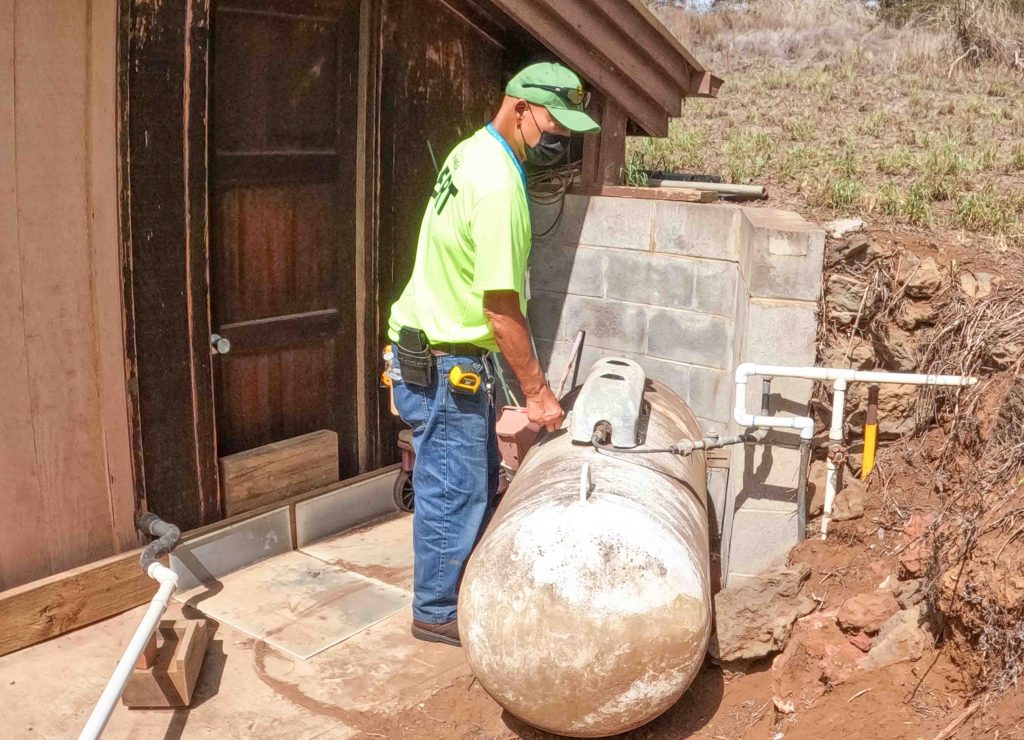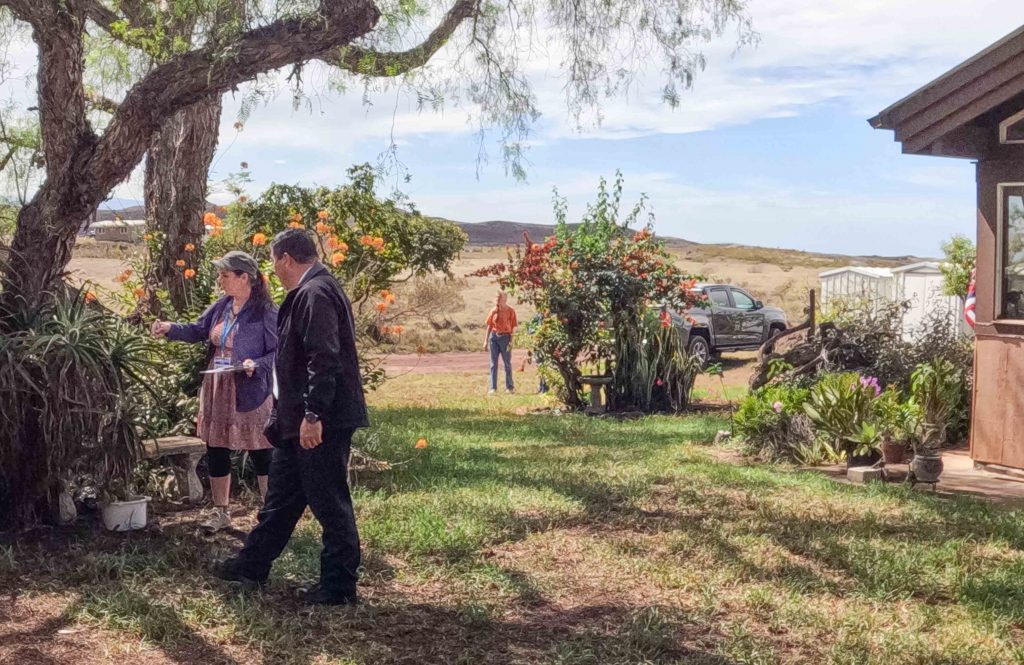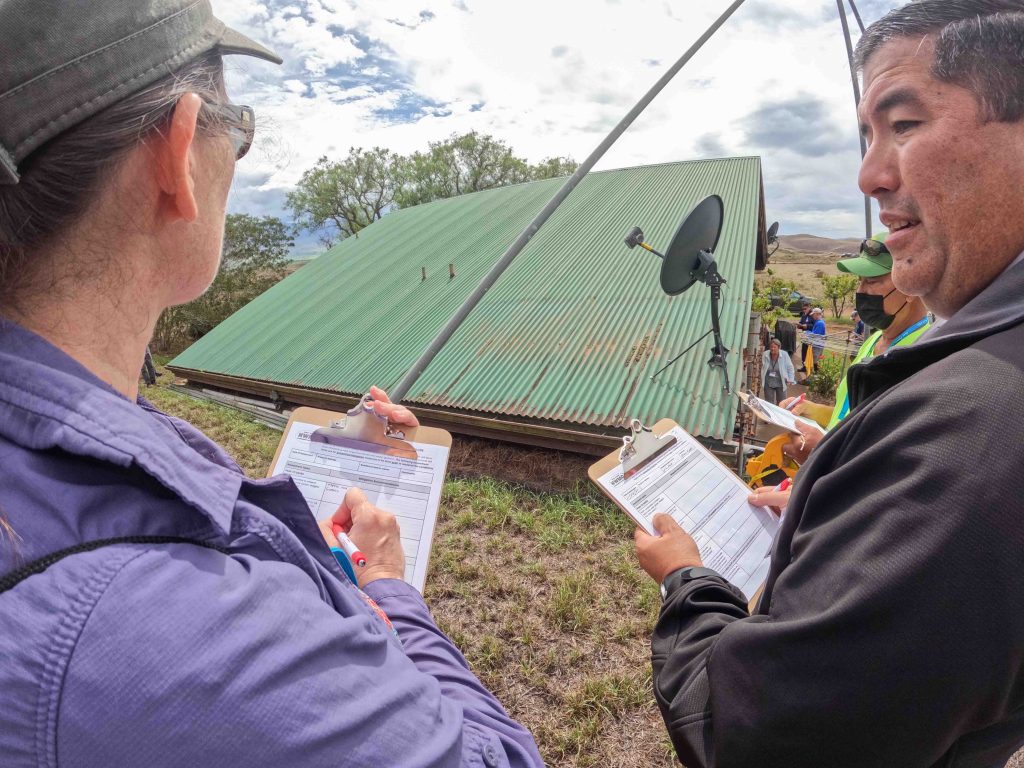Community ambassadors trained to assess wildfire risk for Big Island property owners
The Hawai‘i Wildfire Management Organization is providing training to “community ambassadors” about how to conduct wildfire risk assessments for Big Island property owners.
These are not your typical home assessors who determine the value of your place, but specially trained people who will conduct free reviews of how safe a property and its structures are from the threat of wildfires.
The first year of the home ignition zone home assessor training was prompted by a request from one of the Firewise communities in Hawai‘i.
Nani Barretto, co-executive director of the Hawai‘i Wildfire Management Organization, said: “We currently have 15 Firewise communities. I mentioned the idea and they all said if there was funding to support home assessments we would love to provide our community and neighbors the education to do wildfire home risk assessments. This first year is our pilot.”
Firewise USA is a nationwide program of the National Fire Protection Association, with communities in 37 states. Some, like California, have dozens of communities in the program, and some have only one.
Hawai‘i has three more communities currently going through the Firewise recognition process.
“It’s catching on, it’s spreading,” Barretto said. “The Kaua‘i Fire Department is participating in the assessor training, and they’re hoping to mobilize and inspire communities on that island to become Firewise.”
Mike Walker, the State Protection Forester for the state Division of Forestry and Wildlife, which has primary responsibility for wildland fire suppression on state forest lands, said: “Many of the wildfire ignitions we see occur in what we call the WUI: the wildland/urban interface. Nearly 99% of these ignitions are human caused; be it from a welder, parking a car over dry grass or an intentional ignition like arson.
“When we want to protect our forests from fire, we also really want to protect our communities from fires, too. When ignitions happen in a WUI, these are the people most affected, so we really want to help the community as much as we want to help the forest.”
You can’t miss that the Pu‘ukapu Homestead community on the lower, north flank of Mauna Kea is a Firewise USA community. A pair of signs, when you turn in off Mana Road, announce its participation.
In August 2021, the massive Mana Road wildfire burned down two structures here. On Friday, soon-to-become home assessors practiced what they’d learned during classroom instruction on Thursday at a Pu‘ukapu home.
In teams, they circled the house noting things like defensible space, home construction type and nearby ignition sources. For this home, Walker noted it’s metal roof: “That’s a real fire-resistant roof. She’s got a nice concrete slab around the home, which is a good thing and keeping the grass, that zero-to-five-foot zone, is important to keep any flammable material away from the house.”
Over the next two years, the assessors will concentrate their efforts in designated Firewise communities. Awards and grants from the U.S. Forest Service and Coalitions and Collaboratives are providing information, technical and financial support to community ambassadors to conduct 390 individual home assessments.
“After that, if there is demand and we have all these assessors willing to continue, we will open it up to residents in surrounding communities,” Barretto said. “Sometimes that’s the only inspiration required for a resident to hook up with another neighbor and say, ʻHey, there’s a program called Firewiseʻ.”
Sponsored Content
Comments


















